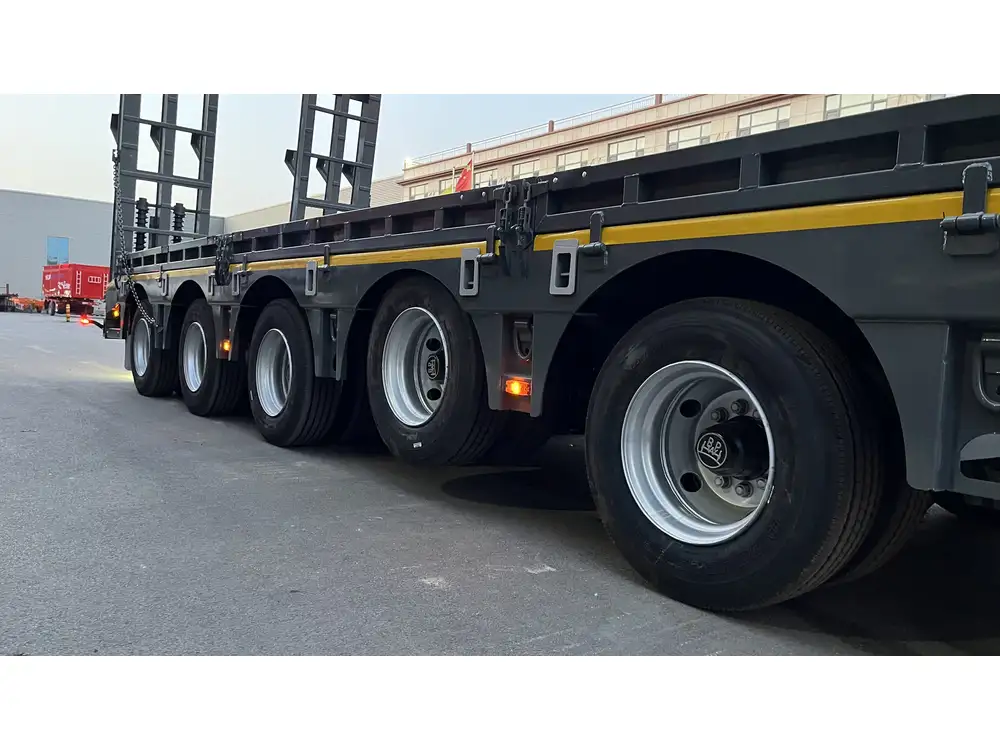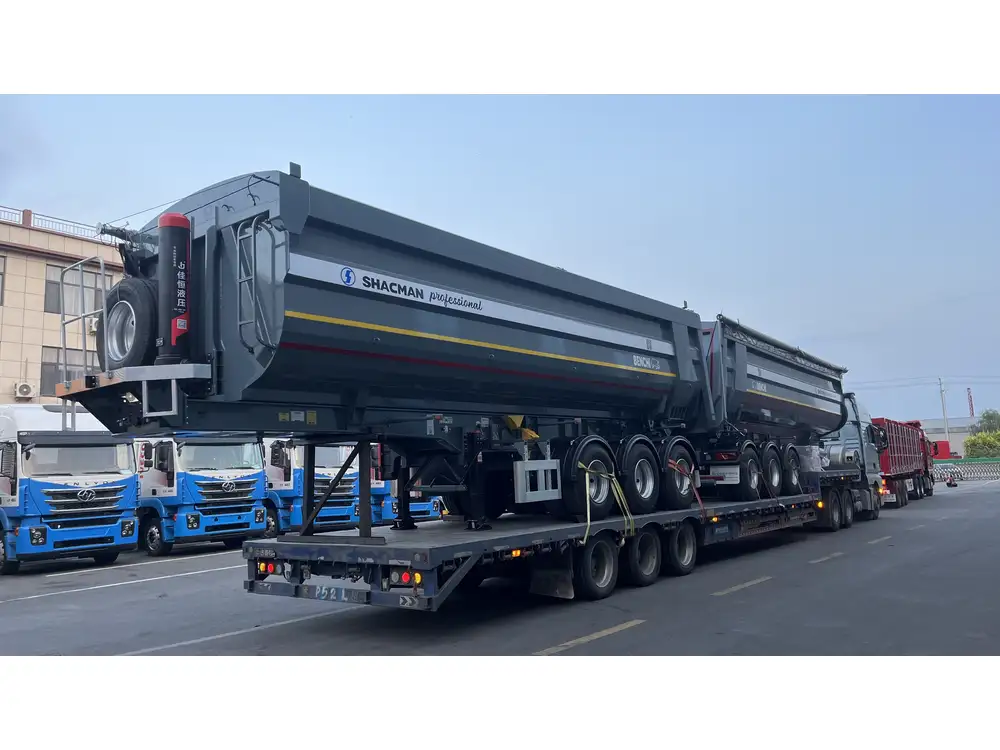Operating a tanker trailer is a critical task that involves more than just driving a vehicle. The complexity and importance of safely transporting liquids, whether they be fuel, chemicals, or food-grade substances, require expertise, knowledge, and a strict adherence to safety protocols. In this comprehensive guide, we will delve deep into the intricacies of tanker trailer operation, covering essential aspects such as pre-trip inspections, loading and unloading procedures, safety protocols, and maintenance tips.
Understanding Tanker Trailers
Types of Tanker Trailers
Before we get into the specifics of operation, it’s essential to understand the types of tanker trailers available:
| Type | Description | Common Use |
|---|---|---|
| Fuel Tanker | Specifically designed for transporting petroleum products. | Gasoline and diesel delivery |
| Chemical Tanker | Features specialized linings to prevent corrosion and leaks. | Transporting chemical substances |
| Food Grade Tanker | Meets FDA and regulatory standards for transporting food. | Delivery of milk, juices, and oils |
| Vacuum Tanker | Designed for suctioning liquids, sludge, and waste material. | Waste removal and sewage transport |

Key Components of a Tanker Trailer
To operate a tanker trailer effectively, one must be familiar with its critical components:
- Tanker Body: The primary vessel that holds the liquid cargo.
- Baffles: Interior walls designed to minimize liquid surge and provide stability while moving.
- Manway: An access point that allows inspection and cleaning of the interior.
- Valves: Controls for loading and unloading liquid, maintaining pressure, and preventing leaks.
- Pump: Often used for unloading; can be manual or electric.
Pre-Trip Inspection: Safety First
Before hitting the road, a thorough pre-trip inspection is indispensable. This checklist-oriented approach not only enhances safety but also ensures compliance with legal regulations.
Pre-Trip Inspection Checklist
Exterior Inspection
- Check for leaks at all junctions and valves.
- Inspect the condition of the tires and ensure proper inflation.
- Ensure that all lights and reflectors are operational.
Tank Condition
- Inspect for any signs of corrosion or damage.
- Ensure manway covers are secured tightly.
Brakes and Suspension
- Check brake functionality: listen for unusual noises and check for responsiveness.
- Inspect the suspension for any signs of wear or damage.
Emergency Equipment
- Verify the presence of fire extinguishers, spill kits, and first aid kits.
- Ensure that communication devices are fully operational.

Importance of Compliance and Documentation
Document every inspection performed. Not only does this practice safeguard against potential liabilities, but it also provides valuable records in case of an inspection by regulatory authorities.
Loading and Unloading Procedures
The process of loading and unloading liquids can be hazardous and requires special attention to detail.
Loading Procedure
Preparation
- Ensure that the site is free of obstructions.
- Wear appropriate personal protective equipment (PPE).
Loading Process
- Communicate with the loading personnel to confirm the liquid type and required safety measures.
- Direct the tanker into position without rushing, ensuring alignment with the loading system.
Tank Filling
- Open the appropriate valves for loading.
- Use the correct flow rate to prevent overflow, monitoring gauges and alarms closely.
- Watch for any bubbling or surging, which indicates overfilling.

Unloading Procedure
Preparation
- Confirm the receipt destination has the necessary infrastructure for unloading.
- Verify that the receiving tanks are empty and properly labeled.
Unloading Process
- Use pumps (if onboard) or gravity to facilitate the unloading process.
- Open the relevant valves while monitoring pressure levels to prevent spillage.
- Perform post-unloading checks to ensure no residual liquid remains in the system.
Safety Protocols: Protecting Life and Property
Personal Safety Measures
Operating a tanker trailer imposes risks that require adherence to strict safety measures:
- Always wear PPE, including gloves, goggles, and chemical-resistant clothing.
- Never engage in any activity that distracts from operating the vehicle.
- Maintain situational awareness, especially when maneuvering in tight spaces.

Hazardous Materials Handling
When dealing with hazardous materials, follow the guidelines established by the Department of Transportation (DOT) and OSHA:
- Be aware of the specific properties of liquids being transported (flammable, corrosive, etc.).
- Use appropriate containment measures to minimize leaks and spills.
- Follow emergency procedures outlined in the Safety Data Sheet (SDS) for each substance.
Emergency Procedures
In the event of an emergency or accident:
- Secure the immediate area and evacuate if necessary.
- Call emergency services and report the situation clearly.
- Refer to emergency response plans specific to the material being transported.
Maintenance of Tanker Trailers: Ensuring Longevity and Compliance
Regular maintenance is fundamental to the safe operation and performance of tanker trailers.

Routine Maintenance Checklist
| Component | Frequency | Task |
|---|---|---|
| Tanker body | Monthly | Inspect for signs of leaks and wear |
| Tires | Weekly | Check pressure and tread depth |
| Braking system | Bi-weekly | Inspect brake pads and adjust as needed |
| Pump and valves | At every trip | Examine for functionality and leaks |
Documentation and Record Keeping
Every maintenance task performed should be documented in a maintenance logbook. This record provides insight into the trailer’s performance history and is crucial for regulatory compliance.
Fuel and Chemical Safety Regulations
Understanding and complying with regulations is not just beneficial but mandatory for tanker trailer operators.

Federal and State Regulations
Familiarize yourself with the Federal Motor Carrier Safety Administration (FMCSA) regulations and any state-specific laws that may apply. Key regulations include:
- Hazardous Materials Transportation Act (HMTA): Governs the transport of hazardous materials and establishes requirements for training and emergency response.
- Environmental Protection Agency (EPA): Outlines standards for the transportation of certain chemicals to protect the environment.
Training and Certification
Ensure that all drivers receive comprehensive training related to tanker operations, which often includes:
- Handling hazardous materials.
- Emergency response protocols.
- Vehicle operation best practices.
Conclusion: Mastering Tanker Trailer Operation
Operating a tanker trailer requires diligence, knowledge, and respect for the materials being transported. From rigorous pre-trip inspections and careful loading/unloading procedures to strict adherence to safety protocols and maintenance schedules, mastering these elements is essential to success in this field. Keeping abreast of regulations and continuous training for drivers ensures not only compliance but also the safety of the operators, the public, and the environment.
By following these guidelines, operators can significantly reduce risks while enhancing efficiency, thereby establishing a reputation for reliability and professionalism in the tanker transport industry.



